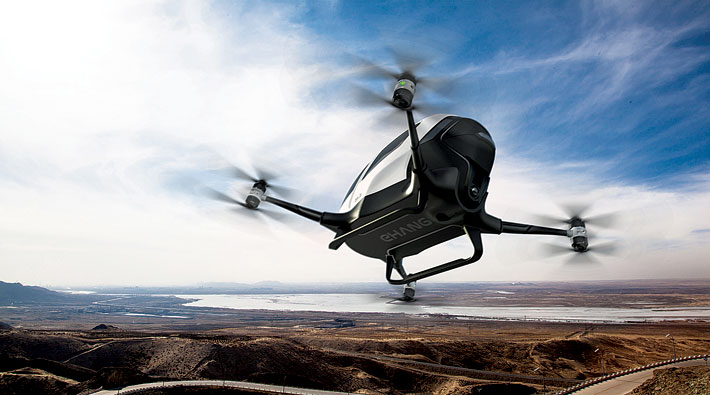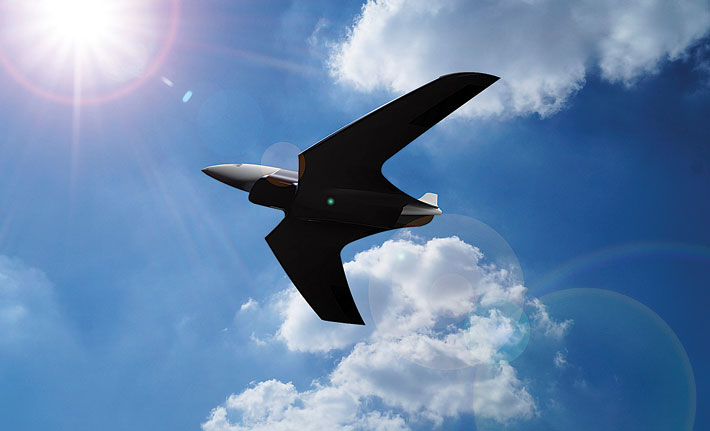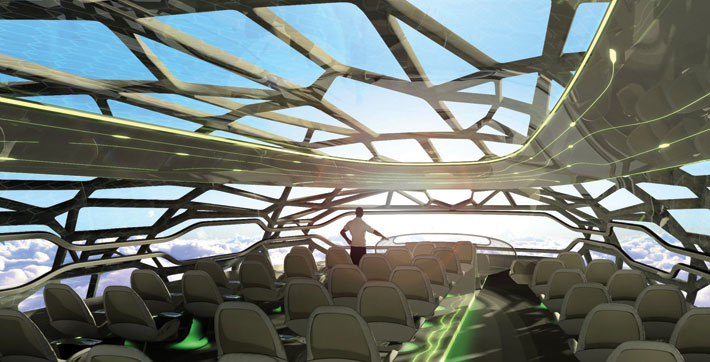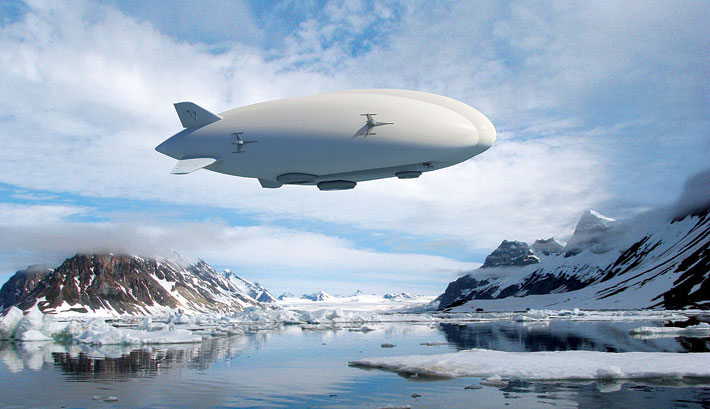INDIAN ARMED FORCES CHIEFS ON
OUR RELENTLESS AND FOCUSED PUBLISHING EFFORTS

SP Guide Publications puts forth a well compiled articulation of issues, pursuits and accomplishments of the Indian Army, over the years

I am confident that SP Guide Publications would continue to inform, inspire and influence.

My compliments to SP Guide Publications for informative and credible reportage on contemporary aerospace issues over the past six decades.
Future of Aviation
Aerospace scientists, engineers and designers are continuously working on various projects to make air travel faster, safer, eco-friendly and experiential

By 2050, that is a little over three decades away, what would airplanes look like and how would they perform? Certainly, they would look different and perform differently. If we look at the history of aviation, we will understand how aviation has continuously evolved from one decade to another, since the Wright Brothers gave us ‘wings to fly’. Planes have become smarter, faster, eco-friendly, and user-friendly, while structurally they look as ‘futuristic’ as they can get with new materials in play. Aerospace scientists, engineers and designers are continuously working on various projects to make air travel faster, safer, ecofriendly, and experiential. Beginning 2017, we look at some of the futuristic programmes, both in civil and military aviation.
X-planes from NASA
The United States National Aeronautics and Space Administration (NASA) has been in the forefront of aeronautics research for decades now. The aeronautical innovators at NASA are preparing to put in the sky an array of new experimental aircraft, each intended to carry on the legacy of demonstrating advanced technologies that will push back the frontiers of aviation.
NASA’s renewed emphasis on X-planes is called “New Aviation Horizons,” an initiative announced in February as part of the President’s budget for the fiscal year that begins October 1, 2016. The plan is to design, build and fly the series of X-planes during the next 10 years as a means to accelerate the adoption of advanced green aviation technologies by industry. “If we can build some of these X-planes and demonstrate some of these technologies, we expect that will make it much easier and faster for US industry to pick them up and roll them out into the marketplace,” said Ed Waggoner, NASA’s Integrated Aviation Systems Program Director.
The scientists/engineers have been working on developing a series of greener, quieter, faster X-planes and one of those is a blended wing body (BWB). A six per cent scale model of a Boeing BWB is being tested for six weeks in the 14 x 22-foot Subsonic Tunnel at NASA’s Langley Research Center in Hampton, Virginia.
It is unlike a conventional airplane. The blended wing body is not the usual tube and wing design, but is triangular in shape where the wings are. The wings do not jut out on either side, but seem merged into the body. One highly noticeable part of the design is that the aircraft has no tail.
This same model was put through its paces in the Langley tunnel in 2014 and in the 40 x 80-foot wind tunnel at NASA’s Ames Research Center in California in 2015. That work was part of NASA’s Environmentally Responsible Aviation programme, which developed technologies to improve fuel efficiencies, lower noise levels and reduce emissions.
But for this test it looks a little different. The top of it has been painted in non-reflective matte black to accommodate laser lights that will sweep across the model in sheets. NASA and Boeing researchers will use those laser sheets combined with smoke in the technique known as particle imagery velocimetry (PIV). That will map the airflow over the model.
In most planes flying today the engines are out on the wings, in front, where there is nice clean airflow. Anything in front of an engine can disrupt the flow. So if engineers have to worry about airflow — why change where the engines are? Researchers say putting them on top of the plane helps shield noise, especially from people on the ground, and contributes towards NASA’s goals of developing greener, quieter planes.
For Boeing the tests are part of an ongoing research development programme. “Our tests are a continuation of more than two decades of successful research and development of this concept, which is unparalleled in industry,” said John Bonet, Boeing’s Test Director for the BWB. “What we learn from this round of testing will be used to complete the definition of our aerodynamic, stability and control low-speed databases — a major milestone in the technology development of the concept.”
If funding is approved, the first flights of the new X-planes could begin sometime around 2020. They also tested an advanced fan design to improve propulsion and reduce noise in jet engines, designs to reduce noise from wing flaps and landing gear, and shape-changing wing flaps. Researchers predict the tech could save the airline industry $255 billion accrued during the first 25 years after being put into service.

Future of Unmanned: Ehang 184 autonomous aerial vehicle (AAV) is aimed at providing medium-short distance communication and transportation solution
The SpaceLiner
The SpaceLiner is an advanced, visionary concept for a suborbital, hypersonic, winged passenger transport, which is currently under investigation at DLR-SART. The two-stage vehicle will be powered by rocket propulsion. It is an ongoing research by the Space Launcher Systems Analysis (SART) department at the Institute of Space Systems in Bremen.
The SpaceLiner is a revolutionary hypersonic spaceplane concept capable of flying some 50 passengers across the globe at speeds of up to 25 times the speed of sound. It’s based on a two-stage concept, not unlike the space shuttle, where both the booster and passenger stages start in an upright configuration. The concept is propelled by 11 rocket engines during launch (nine on the booster stage and two on the passenger stage) the system accelerates into the mesosphere using traditional cryogenic rocket propulsion.
THE NASA PLAN IS TO DESIGN, BUILD AND FLY THE SERIES OF X-PLANES DURING THE NEXT 10 YEARS AS A MEANS TO ACCELERATE THE ADOPTION OF ADVANCED GREEN AVIATION TECHNOLOGIES BY INDUSTRY
Once the booster stage is empty, the passenger vehicle separates from the booster stage and continues accelerating, flying autonomously, just like an aircraft — except that it does so while reaching astonishing speed of up to Mach 25. After reaching a maximum altitude of about 80 kilometres, the passenger stage commences a gliding descent towards its destination.
Not only is the SpaceLiner concept incredibly fast, it’s also environmentally friendly. It uses liquid oxygen and liquid hydrogen (LOx/LH2) propellants so only water vapour is produced. Most of the flight processes will be fully automated, but there would still be two pilots to monitor all onboard and flight procedures — and to provide reassurance to passengers. If it materialises, London to Melbourne is just a matter of 90 minutes that is travelling at 25 times the speed of sound.
Antipode supersonic business aircraft
The Antipode is a supersonic business aircraft concept capable of reaching 25,600 kmph. It uses counter flowing jets of air on its leading edges to reduce heat and the sonic shockwave. According to the Canadian designer Charles Bombardier, the Antipode would be able to take off directly from any airfield by using reusable rocket boosters. These rockets would attach to the wings of the Antipode and provide enough thrust to lift off, climb to 40,000 feet, and reach Mach 5. The Antipode would channel some of the air, flowing at supersonic speed, through a nozzle located on the nose of the aircraft. The plane’s wings would have enough lift to glide and land on a 6,000 foot runway.
The Antipode could be used as business or military aircraft to transport two passengers across the globe (up to 20,000 km) in less than an hour. Joseph Hazeltine is looking for research funding for the concept plane. The images of the Antipode concept have been created by Abhishek Roy, founder of Lunatic Koncepts, a design lab based in India.

Reaching Mach 5: Antipode supersonic business aircraft
The Future by Airbus
The aerospace behemoth Airbus has revealed in ‘The Future by Airbus’, a vision of sustainable aviation in 2050 which looks beyond aircraft design to how the aircraft is operated both on the ground and in the air in order to meet the expected growth in air travel in a sustainable way.
THE AIRBUS CONCEPT PLANE IS GOING TO HAVE LONGER AND SLIMMER WINGS TO HELP GLIDE THROUGH THE SKIES, AS THE FLOW OF AIR OVER THE WING SURFACE REDUCES DRAG AND IN TURN, IMPROVES FUEL EFFICIENCY
Already today, if the air traffic management (ATM) system and technology onboard aircraft were optimised (assuming around 30 million flights per year), Airbus research suggests that every flight in the world could on average be around 13 minutes shorter. This would save around nine million tonnes of excess fuel annually, which equates to over 28 million tonnes of avoidable CO2 emissions and a saving for passengers of over 500 million hours of excess flight time onboard an aircraft. Add to this new aircraft design, alternative energy sources and new ways of flying and you could see even more significant improvements. The Future by Airbus concentrates on just that and the Smarter Skies vision consists of five concepts which could be implemented across all the stages of an aircraft’s operation to reduce waste in the system (waste in time, waste in fuel, reduction of CO2).
The Airbus concept plane is going to have longer and slimmer wings to help glide through the skies, as the flow of air over the wing surface reduces drag and in turn, improves fuel efficiency. It would have new lightweight ‘smart’ materials, making for a lighter aircraft that draws less fuel and curbs emissions. The engines will be more reliable, quieter and fuel-efficient. The positioning of the engines, at the rear and semi-embedded, fully optimises the aircraft for lower fuel burn. The fuselage (central body of the aircraft) is no longer a simple tube but is curved and shaped to provide more internal space for various cabin configurations, with better aerodynamics outside to improve flight. The fuselage and entire aircraft structure is manufactured entirely from composite to take advantage of the easy-to-shape characteristics of the material. Entrance/exit doorways are double doors to allow for faster, easier boarding. The empennage (tail section of the aircraft) is U-shaped, acting as a shield to reduce external noise pollution. The concept plane does not use a vertical tail, as seen on the planes of today. Vertical tails are required when engines are installed on the wings as they provide directional stability in case of engine failure. The engines of the future will have no risk of failure, eliminating the need for a vertical tail.

Walk in Skies: Airbus’ Concept Cabins
The future is supersonic
Definitely so if everybody can afford to fly. The XB-1 from Boom has the key technologies for efficient supersonic flight: advanced aerodynamic design, lightweight materials that can withstand supersonic flight, and an efficient super-cruise propulsion system. This will enable an ultra-fast airliner as efficient and affordable as business class in today’s subsonic wide-body airliners. Engineering development of XB-1 (‘Baby Boom’) is proceeding rapidly, with aerodynamics defined, systems ground tested, and initial structural components in fabrication. Vehicle assembly starts shortly, with first flight planned for late 2017.
Alternate Energy
SUGAR Volt is a hybrid aircraft concept proposed by Boeing in response to a request for proposals for future aircraft issued by NASA. It is proposed that SUGAR Volt would use two hybrid turbofans that burn conventional jet fuel when taking off, then use electric motors to power the engines while flying. SUGAR stands for Subsonic Ultragreen Aircraft Research, the “volt” part of the “SUGAR Volt” name suggests that it would be at least partly powered by electricity. SUGAR Volt would have emissions about 70 per cent lower than average airliners today. Noise pollution will also be lower than airliners today. The wings of SUGAR Volt would enable it to take off in a shorter distance and generate less noise.
Hovercraft for Cargo
From carrying heavy equipment to isolated regions, to serving as a flying clinic for disaster-relief efforts, there is almost no cargo mission the Hybrid Airship ship can’t perform. This is due to the fact that the airship can land nearly anywhere without needing any runway or roads. What gives the Hybrid Airship this capability? The air cushion landing system (ACLS) and it makes the challenge of accessing remote regions around the globe a thing of the past. Lockheed Martin Skunk Works® developed an ACLS that blends hovercraft technology with the airship design. The ACLS system consists of three underbody hoverpads. These hoverpads create a cushion of air that allows the airship to float along the ground nearly friction free. The system gives the Hybrid Airship a unique capability to hover over water – a capability unmatched by any other cargo-hauling air vehicle.
Northrop Grumman futuristic fighter jet
Recently Northrop Grumman showed a 30-second commercial wherein it gave a glimpse of sixth-generation fighters, which may be decades away in the making. The company presented to reporters its vision of the sixth-generation fighter, which will be stealth oriented and include lasers. As per the design, it could theoretically fly over the war zones in the coming century. The design looks like a flying saucer wherein the tail does not exist, thus reducing the size of the aircraft and creating a smoother shape. Experts have said that the futuristic concept has genesis in fighters built by Nazi Germany during World War II. The aircraft was the Horten Ho 229 which was said to be far ahead of its time that its aerodynamic secrets are still not completely understood. A chief scientist at NASA is studying the Horten Ho 229.
The challenge before designers, engineers and scientists is how to get rid of the tail and still keep the aircraft stable. Reports have indicated that if the aircraft has no tail fins, it will have as little drag as possible, making the aircraft lighter and more fuel-efficient. Aerospace scientists/innovators have, nevertheless, are looking at tailwinds to take their concepts totally futuristic and feasible.
Fully Automated Planes
Ehang 184 autonomous aerial vehicle (AAV) is the safest, smartest and eco-friendly low altitude autonomous aerial vehicle, aiming on providing medium-short distance communication and transportation solution. The 184 AAV is designed with full redundancy — if one set of the power system are operating abnormal, the vehicle can still operate a normal flight plan and ensure the safety of the passenger together with the vehicle. The AAV is designed to be a 100 per cent with green technology and is powered by electricity only. It is embedded with Ehang fail safe system. If any components malfunction or disconnect, the aircraft will immediately land in the nearest possible area to ensure safety. The communication is encrypted and each AAV has its independent key. Ehang 184 AAV flies in an inverted U shape, this means that take-off/landing points are landing targets pre-set with Ehang Logo. The landing camera will position the landing targets automatically and accurately.
Alternate Energy
Airbus’ E-Fan family accelerates the journey towards environmentally-friendly aviation. The E-Fan is bringing more electric propulsion to the aviation industry. Developed in an Airbus-led European programme, the E-Fan’s history-making first version was designed specifically for electric power — an important stepping stone on Airbus’s electric aircraft road map and towards the production E-Fan 2.0 version. In a second step, E-Fan was transformed into an updated “Plus” version with a hybrid configuration for longer flight endurance. E-Fan Plus — which debuted during the summer of 2016 — incorporates an internal combustion engine as a range extender in addition to the aircraft’s onboard lithium-ion batteries. These two propulsion system configurations — and ongoing innovation — highlight the aircraft’s role as a technology demonstrator that allows the company to make important advances on its electric aircraft road map.
Wearable Avionics
Instrument panel may soon be a thing of the past. With the popularity of wearable electronics soaring in recent years, it is very imaginable and feasible that some of these products could be used in aviation. In the near future, do not be surprised to see pilots using Google Glass to synch with the aircraft or automatically update themselves with weather changes. Aero Glass provides a unique turnkey solution addressing pilots’ need to properly visualise terrain, navigation, traffic (ADS-B), instrument, weather, and airspace information with access to vital safety procedures and protocols, without the requirement of inspecting instruments, phone or iPad. Using Osterhout Design Group, Epson Moverio and other head-mounted displays, Aero Glass is the first to bring Augmented Reality to pilots providing an unparalleled 3D, 360° experience in the cockpit, regardless of the visibility.

LM H-1 Hybrid Airship
The D2 is a pilot watch designed to be as sophisticated in style as it is in function. It’s the first pilot watch to help in-flight, boasting a high-sensitivity WAAS GPS receiver, altimeter with adjustable baro setting, and 3-axis compass. It has a domed lens to make the screen easy to read in direct sunlight, and a brilliant orange backlight for night flights.
With D2, the pilot can access Garmin’s signature Direct-to and Nearest routing with a simple press of a button. D2 has a worldwide airport database so the pilot can fly straight to the airport or waypoint of his choice. Or he can find the nearest airport if the pilot needs to land quickly. He can view the route on a moving map display or follow the HSI to the destination.
The D2 has customisable displays so the pilot can quickly access the data that’s most important to him, including current GPS ground speed, GPS track, distance from waypoints/airports, estimated time en route, bearing, and glide ratio. D2 shows local time and Zulu/UTC time, along with up to 4 different time zones. The pilot can set timers with vibrating alerts to remind him of important tasks, like switching fuel tanks. The pilot can also conveniently build flight plans and create waypoints with Garmin Pilot and easily upload them to D2. With a VIRB on the aircraft, D2 can be used to wirelessly start and stop recording, view elapsed time, or tell it when to capture still shots. D2 can even control multiple VIRB Elite cameras at the same time, so one can capture the action from multiple angles.
Aircraft Interiors
Airbus Concept Cabin illustrates what the future of flight might look like from the passengers’ perspective. Inspired by nature — and designed to protect it — aircraft cabins of the future will be customised to the needs of individual passengers. The Concept Cabin doesn’t conform to the traditional cabin classes found in today’s commercial aircraft. First, business and economy class are replaced by zones that target more individual needs like relaxing, playing games, interacting with other passengers or holding business meetings with people on the ground. The cabin’s bionic structure and responsive membrane combines panoramic views with an integrated neural network pulsing through it, which can identify and respond to the specific needs of each passenger. And the fittings and furnishings will take care of their own cleaning and repairs due to innovations like dirt repellent coatings and self-healing covers.
Fully Automated Airports
Imagine a situation where upon arriving at an airport, you are able to work your way through all the procedures and are able to reach the designated plane without interacting with a single airport staff. At the airport of the near future, the passengers first interaction could be with a flight attendant.
For quite a while now, passengers have been checking in online or at airport kiosks. Recently, carriers have converted paper boarding passes into electronic ones. Now airlines are turning to technology that enables travellers to check their own bags. Kiosks will then direct travellers to self-boarding gates, where fliers scan their boarding passes to board the plane.
IATA VISION 2050 – SHAPING AVIATION’S FUTURE
IATA’s Vision 2050 document tries to encapsulate the aviation industry as it would be in 2050. An industry that carried 16 billion passengers and shipped 400 million tonnes of goods, growing at almost twice the rate of GDP expansion, meaning that more people are travelling than ever before and more frequently than ever before. Travelling by air is faster (when desired), safer and more seamless than ever before. Unsurprisingly, mobile technology available to air transport consumers is also affecting their behaviour when they travel. Lifestyle Integrated Management Pods (LIMPs) mean that they have the ability to effortlessly and seamlessly change itineraries as and when they see fit. Passenger information and transfer offices are a thing of the past. And fortunately so are queues. In-flight entertainment systems are also no longer present on most aircraft, because passengers have all of their personal audio, video or virtual entertainment needs to hand and available to take on board, downloaded directly from Internet 8, which automatically charges them the correct amount.
Vastly improved high-speed train networks are now the norm in developed economies. As such, the train is often the preferred alternative for journeys of fewer than 800 Kilometres. But for customers wishing to travel longer distances, air travel remains the only option available.
The shipment of cargo has been equally revolutionised. Businesses rarely have corporate centres anymore and manufacturers move their operations from one site to another with increasing regularity as labour and raw materials are more easily available anywhere and at any time. So as with passengers, cargo operators had to evolve their operations based on the need for ever-increasing flexibility and customisation.
Vision 2050 was an exercise undertaken by IATA to identify long-term challenges and possible outcomes for the air transport industry. As the industry continues to grow, it must address issues of capacity, environment, safety, security and financial sustainability. To prepare the industry for the future, the Vision 2050 report was based on four pillars.
Vision 2050 Pillars
- Structuring for profitability.
- Sufficient and efficient infrastructure.
- Sustainable technology to power the industry.
- Capability to meet the needs of the customer of the future.
According to IATA , the industry must break down the silos that dominate the industry’s value chain. By working together, the industry can create new value propositions for our customers and move away from destructive competition based solely on price. Secondly, governments must join the industry in this change. This will mean replacing interventionist micro-management and punitive taxation as the modus operandi, with a positive approach based on a level playing field and focused on commercial freedoms. Third, everybody must embrace the reality of an industry whose centre of gravity is shifting away from traditional leaders like US and Europe. Asia-Pacific is already the biggest market. The continued development of China and India will keep this region at the industry’s forefront.





